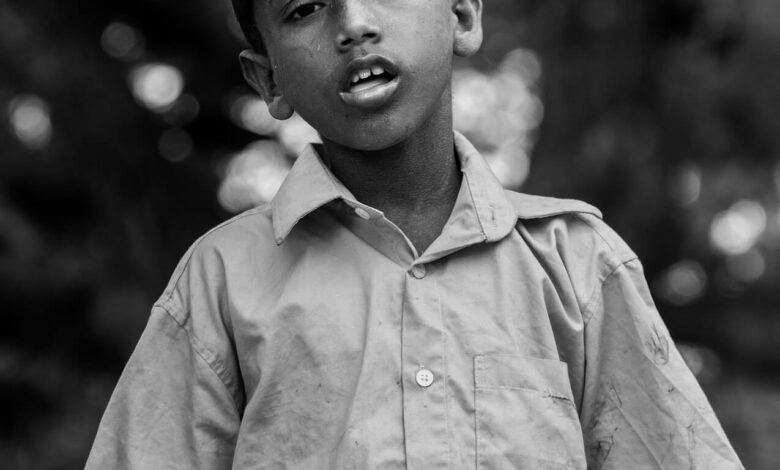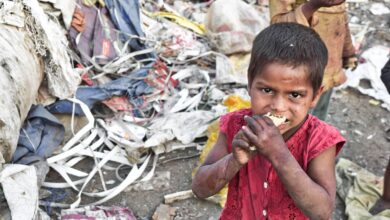Hunger and Its Impact on Poor Kids: Addressing a Dire Crisis

Hunger is a heartbreaking reality that affects millions of children worldwide, particularly those living in poverty-stricken conditions. This article delves into the issue of hunger, explores its causes and consequences for impoverished children, and discusses various approaches to address this crisis. Join us on this journey as we explore the underlying challenges and potential solutions that can make a difference in the lives of these vulnerable youngsters.
1. Introduction
In this section, we introduce the topic of hunger and its prevalence among disadvantaged children. We emphasize the importance of addressing this issue and its long-term impact on the well-being and future prospects of affected individuals.
2. Understanding Hunger
In this section, we delve deeper into the concept of hunger, shedding light on its various dimensions and ramifications. We explore the factors that contribute to hunger, including economic inequality, food insecurity, and limited access to nutritional resources.
2.1 Causes of Hunger
Within this subsection, we examine the primary causes of hunger among poor children. We discuss factors such as poverty, unemployment, inadequate social safety nets, and natural disasters that exacerbate the food crisis.
2.2 Impact on Poor Kids
This subsection focuses on the detrimental consequences of hunger on the physical, cognitive, and emotional development of impoverished children. We explore the long-term effects of malnutrition, including stunted growth, cognitive impairments, and compromised immune systems.
3. Addressing the Issue
In this section, we highlight the efforts and initiatives undertaken by various stakeholders to combat hunger among poor kids. We shed light on the roles played by governments, non-profit organizations, and local communities in tackling this crisis.
3.1 Government Initiatives
Within this subsection, we examine the policies and programs implemented by governments to alleviate hunger and support disadvantaged children. We discuss the importance of social welfare programs, school meal initiatives, and legislative measures aimed at eradicating child poverty.
3.2 Non-Profit Organizations
This subsection focuses on the invaluable contributions of non-profit organizations in providing food assistance, nutritional education, and advocacy for vulnerable children. We highlight their initiatives and emphasize the need for collaborative efforts between government bodies and NGOs to maximize impact.
3.3 Community Support
Within this subsection, we explore the significance of community engagement and grassroots initiatives in addressing hunger among poor kids. We showcase examples of community-driven campaigns, food drives, and local support networks that play a pivotal role in ensuring the well-being of underprivileged children.
4. Education and Empowerment
In this section, we emphasize the crucial role of education and empowerment in breaking the cycle of poverty and hunger. We discuss the transformative power of education and the importance of providing skills and opportunities to disadvantaged children.
4.1 Importance of Education (continued)
Within this subsection, we delve into the multifaceted benefits of education for impoverished children. We discuss how education can serve as a pathway out of poverty by equipping children with knowledge, skills, and opportunities for a brighter future. Access to quality education not only enhances their intellectual abilities but also fosters critical thinking, problem-solving, and creativity.
Education empowers children to break free from the vicious cycle of hunger and poverty by expanding their horizons and opening doors to better opportunities. It instills confidence, self-esteem, and a sense of purpose, enabling them to envision a life beyond their current circumstances. With education, poor kids gain the tools they need to navigate the complexities of the modern world and strive for a better future.
4.2 Providing Skills and Opportunities
In this subsection, we emphasize the importance of providing practical skills and opportunities to impoverished children. Education goes beyond traditional academic subjects and should encompass vocational training, entrepreneurship programs, and apprenticeships. By equipping children with tangible skills, we enable them to secure meaningful employment and become self-reliant individuals capable of breaking free from the cycle of poverty and hunger.
Moreover, creating opportunities for hands-on learning and exposure to various industries broadens their horizons and helps them discover their interests and passions. By nurturing their talents and providing mentorship, we pave the way for them to pursue fulfilling careers that contribute to their personal growth and uplift their communities.
5. Breaking the Cycle of Poverty
In this section, we explore strategies and approaches to break the cycle of poverty and hunger, ensuring sustainable solutions that address the root causes of these issues.
5.1 Creating Sustainable Solutions
Within this subsection, we emphasize the need for long-term solutions that address the underlying factors contributing to poverty and hunger. This involves initiatives that focus on economic empowerment, job creation, and social support systems. By creating an enabling environment that promotes equal opportunities and inclusive growth, we can provide impoverished children with the tools they need to thrive.
Collaborative efforts involving governments, private sector entities, and civil society are crucial to developing comprehensive strategies aimed at eradicating poverty and hunger. This includes promoting fair trade practices, enhancing agricultural productivity, investing in infrastructure, and fostering innovation in sectors that directly impact the livelihoods of poor communities.
5.2 Access to Healthcare
In this subsection, we discuss the vital role of healthcare in breaking the cycle of poverty and hunger. Poor children often face barriers in accessing quality healthcare services, which can exacerbate their vulnerability to illnesses and further hinder their development. Ensuring equitable access to healthcare, including preventive care, vaccinations, and nutrition programs, is essential in improving their overall well-being.
Efforts to strengthen healthcare systems, train healthcare professionals, and establish community-based health centers can make a significant difference in addressing the health needs of impoverished children. By prioritizing their physical and mental well-being, we lay a solid foundation for their growth, education, and future prospects.
6. Conclusion
In conclusion, the issue of hunger among poor children is a pressing global crisis that demands urgent attention. By understanding the causes and consequences of hunger, we can develop effective strategies to address this issue comprehensively. Education, empowerment, and sustainable solutions play a pivotal role in breaking the cycle of poverty and hunger, enabling disadvantaged children to overcome obstacles and build a brighter future.
It is our collective responsibility to advocate for change, support initiatives by governments and non-profit organizations, and foster a sense of community to ensure that no child goes hungry. Together, we can create a world where every child has access to nutritious food, quality education, and opportunities for growth and success.
7. FAQs
1. How can I contribute to alleviating hunger among poor kids?
There are several ways you can make a difference. Consider volunteering your time or donating to reputable organizations that focus on providing meals and support to underprivileged children. You can also raise awareness about the issue of hunger by organizing fundraising events or advocating for policy changes that prioritize food security and child welfare.
2. Are there specific regions or countries where hunger among poor kids is more prevalent?
Hunger among poor children is a global issue, affecting various regions and countries. However, it is particularly widespread in areas with high levels of poverty, limited access to resources, and ongoing conflicts or natural disasters. Developing nations, in particular, often face significant challenges in combating hunger among their most vulnerable populations.
3. How does hunger impact the long-term development of poor kids?
Hunger has severe implications for the long-term development of impoverished children. It can lead to stunted growth, cognitive impairments, and weakened immune systems. These effects hinder their physical and intellectual development, making it difficult for them to reach their full potential and escape the cycle of poverty.
4. What role do schools play in addressing hunger among poor kids?
Schools play a crucial role in addressing hunger among poor children. Many educational institutions provide meals and nutritional support programs, ensuring that students have access to regular, nutritious food. School-based interventions not only alleviate hunger but also create a conducive learning environment that enhances educational outcomes and overall well-being.
5. How can we ensure the sustainability of initiatives aimed at combating hunger among poor kids?
To ensure the sustainability of initiatives, it is essential to adopt a comprehensive approach that addresses the root causes of hunger and poverty. This involves investing in education, healthcare, job creation, and social support systems. Collaborative partnerships between governments, non-profit organizations, and communities are key to implementing long-term solutions and fostering lasting change.
Remember, together we can make a difference in the lives of hungry children. By supporting initiatives, raising awareness, and advocating for policies that prioritize their well-being, we can create a world where no child goes to bed hungry.



